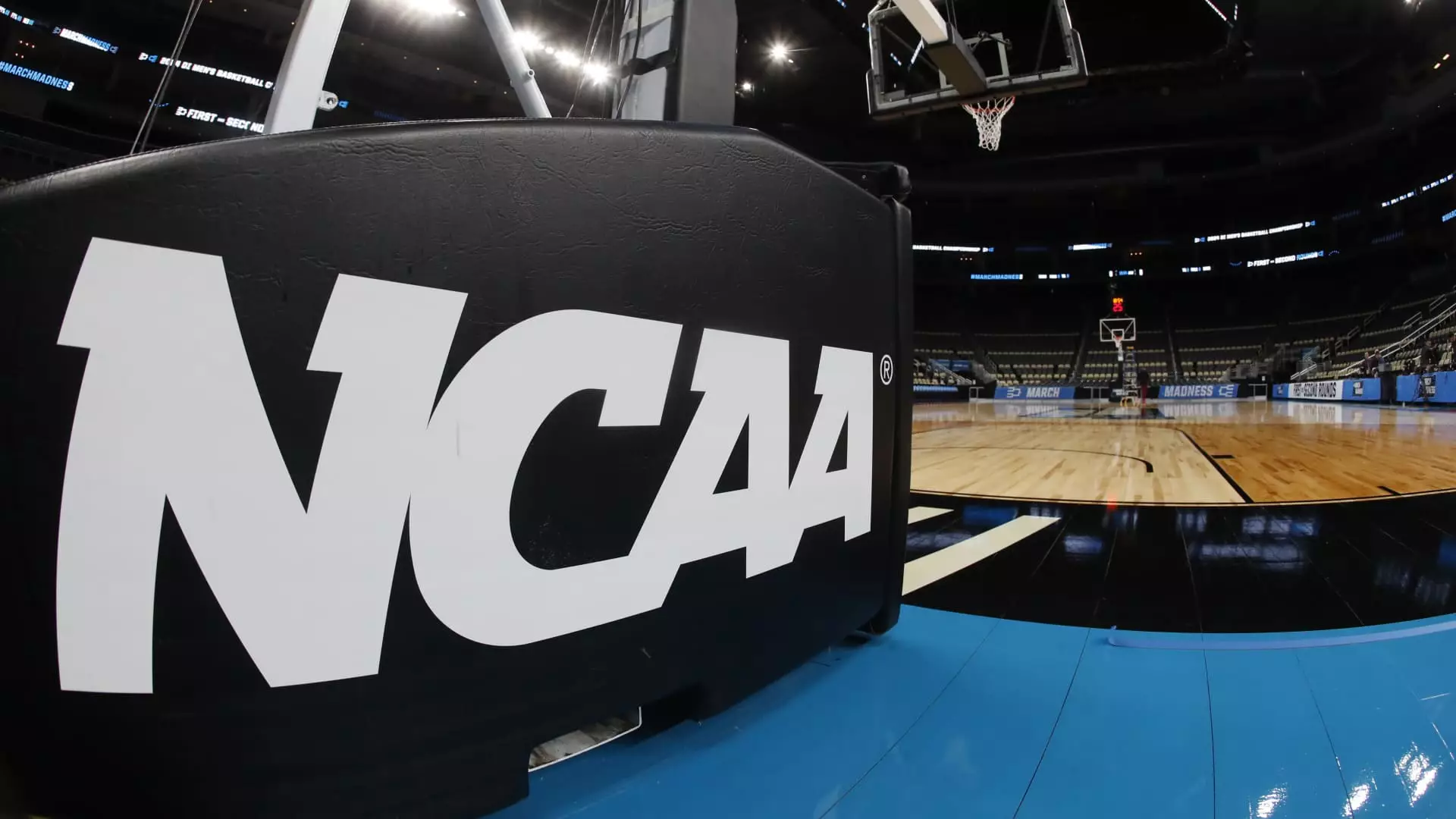In a recent turn of events, the NCAA (National Collegiate Athletic Association) has significantly revised its policy regarding transgender student-athletes, now firmly prohibiting trans women from competing in women’s sports. This change came swiftly in the wake of President Donald Trump’s executive order, which threatens federal funding to schools that allow such participation. The implications of this policy shift resonate deeply within the broader context of gender identity, equity in sports, and the complexities of policy-making in educational institutions.
Under the newly minted regulations, athletes assigned male at birth can still practice with women’s teams and access related benefits, such as medical support, but are barred from participating in formal competitive events. Conversely, students assigned female at birth who take testosterone or undergo hormone therapy also face exclusion from women’s teams. This stark dichotomy reflects an adherence to a binary understanding of gender, raising questions about the inclusiveness and fairness of the policy.
Critically, while all students have the option to compete on men’s teams, those undergoing testosterone treatment must navigate a specialized medical exemption process. This dual standard for participation indicates a fundamental misunderstanding of the broader spectrum of gender identities and expressions, which naturally leads to debates around equity and inclusion in collegiate athletics.
Prior to these updates, the NCAA based its transgender athlete eligibility on the standards set by Olympic governing bodies, a policy they adopted in January 2022. This earlier framework allowed for a more nuanced approach to transgender participation in sports, taking into account individual circumstances rather than rigid categorizations. NCAA President Charlie Baker emphasized the need for uniform eligibility standards to counteract “conflicting state laws and court decisions.” Yet, it begs the question of whether this new approach is genuinely in the best interest of student-athletes or if it is a reactionary measure to political pressures.
The NCAA, comprising over 1,100 colleges and over 530,000 student-athletes nationwide, must address the unique needs of its diverse membership while balancing sensitivity to emerging science and societal mores regarding gender identity.
Trump’s executive order, which not only restricts transgender participation in sports but also asserts the existence of only two biological sexes, sets a precedent that influences sports and education policy on a national scale. This rigid framework, which the administration refers to as counteracting “gender ideology,” serves to diminish the complex realities of gender identity, presenting a binary view that fails to accommodate intersex and nonbinary individuals.
Such political dynamics have potential ramifications that extend beyond the NCAA into the public perception of gender issues, often reinforcing stigmas and discouraging openness in discussions surrounding gender and sports.
The NCAA’s new policy has ignited fervent reactions from both advocacy groups and individuals within the athletics community. Transgender triathlete Chris Mosier criticized the decision for framing gender in strictly binary terms and underscored the potential harm it could pose to intersex athletes and those undergoing hormone therapy for medical reasons. The implications extend beyond mere sports participation, touching on broader societal acceptance of transgender and nonbinary identities.
Advocacy organizations like GLAAD have condemned the policy, labeling it “deeply disturbing” and contrary to established medical and scientific insights regarding transgender health and rights. They argue that the NCAA’s recent actions reflect a misplaced allegiance to political narratives rather than an informed consensus that prioritizes inclusion and safety for all athletes.
The revision of the NCAA policy concerning transgender student-athletes underscores a critical juncture in the ongoing discourse around gender identity, athletic equality, and educational policy. As the conversation unfolds, it is imperative for governing bodies and institutions to reassess their approaches, striving to create environments that foster inclusivity rather than division. By embracing the complexities of gender identity and working towards empathetic policies, the NCAA and similar organizations can pave the way for a more equitable framework that serves all athletes regardless of their identity. The battle for inclusive practices in sports is far from over, and it will require the collective effort of advocates, policymakers, and the broader athletic community to chart a course forward based on respect, understanding, and fairness.

